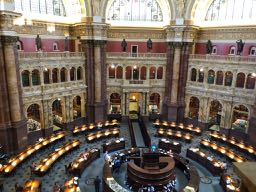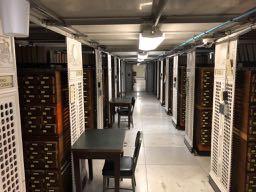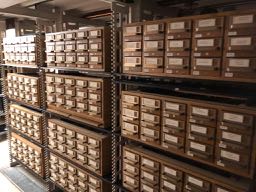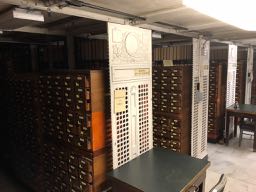
Although I lived in the Washington, DC, area for 13 years, and at various times went to all the monuments, memorials, and museums, I somehow skipped the Library of Congress. So, while I was there this weekend visiting family, I took the Metro’s red line downtown to Union Station and walked a few blocks to the LOC’s main building, which is named after Thomas Jefferson.
I arrived just in time to join a tour, in which I learned that, contrary to what I’d believed my whole life, Jefferson did not start the library. He didn’t get involved until after the British burned the Capitol Building during the War Of 1812, when the entire collection of books was lost. Upon hearing of the loss, Jefferson — then living in retirement at his Monticello home — offered to sell his more than six thousand books to Congress, and that became the foundation of the congressional collection. Then there was another fire in 1851 in the Capitol that destroyed almost two-thirds of the books on the stacks, which led to the building of a separate facility across the street for the LOC, and the re-building of its collection yet again. In its current form, it contains more than 167 million items, from books to manuscripts to recordings to photos to maps to sheet music.
The interior of the LOC is absolutely beautiful everywhere you look. The docent on my tour, Jeff, was a very good story teller and a pleasure to listen to. He made a special point to mention that Jefferson’s collection is still on display, although not as a centerpiece of the museum. You have to walk through a long exhibit from World War I before you come up on the circle of shelves that contain some of his original books, some replacements for those that burned, and open spaces they hope to fill with the help of rare-book collectors around the world. Jeff explained that Jefferson had kept the books in a circle with his chair and desk in the middle so he was equidistant from all of the ideas around him.
The tour doesn’t take you into the Main Reading Room, where researchers and others can request any book in the LOC collection and have it brought to them to peruse (but not take out). From an overlook above, we could see several people in that room, and Jeff informed us that we could gain access if we’d take the time to get an official LOC Readers’ Card (free to anyone over 16).
Of course, I did that and walked in, but before I reached the Main Room, I spotted a reference librarian (Lisa) at a desk. I asked her to look up the books my father wrote in the 1980s and 1990s, and was thrilled to discover that almost all of them are in the LOC collection. I had a few more questions for her, then told her how I had worked at our local public library shelving books a couple of days a week during my high schools years, and how much respect I hold for reference librarians because my mother had been one for several decades. Lisa smiled and said, “Well, since you have libraries in your blood, I’ll tell you about something most people don’t get to see. When you walk into the Main Reading Room, turn left to Alcove 7 and go through the green doors. Behind them, you’ll see the full card catalog that we used to work from before the whole system was digitized three decades ago.”
I followed her directions, and as soon as I walked through those doors, I had an olfactory flashback — the rows and rows of card catalogs smelled exactly the way I remembered those at the Bryant Library, where I’d worked so many decades ago. The LOC card drawers are still open, so I glanced through a few, marveling at the history around me in row after row after row.



According to a sign inside, those cabinets contain 22,000 drawers which each hold a thousand cards — that’s a total of twenty-two million cards! They stopped adding to it in 1980, when they began moving everything into a digital database, but they’re still adding items to the online catalog, at the amazing rate of 10,000 items a day.
From the windows on one side of the Jefferson Building, you can see the Capitol Rotunda and adjacent offices of the House and Senate. I hold most of the people in that facility in complete contempt, but I have nothing but respect for those who continue to maintain the massive (and still growing) repository of knowledge that makes up the Library Of Congress. If only the politicians would cross the street every once in awhile to take a look at just a sample of the information contained there, some of the knowledge might creep back across the street and into our public debate.
